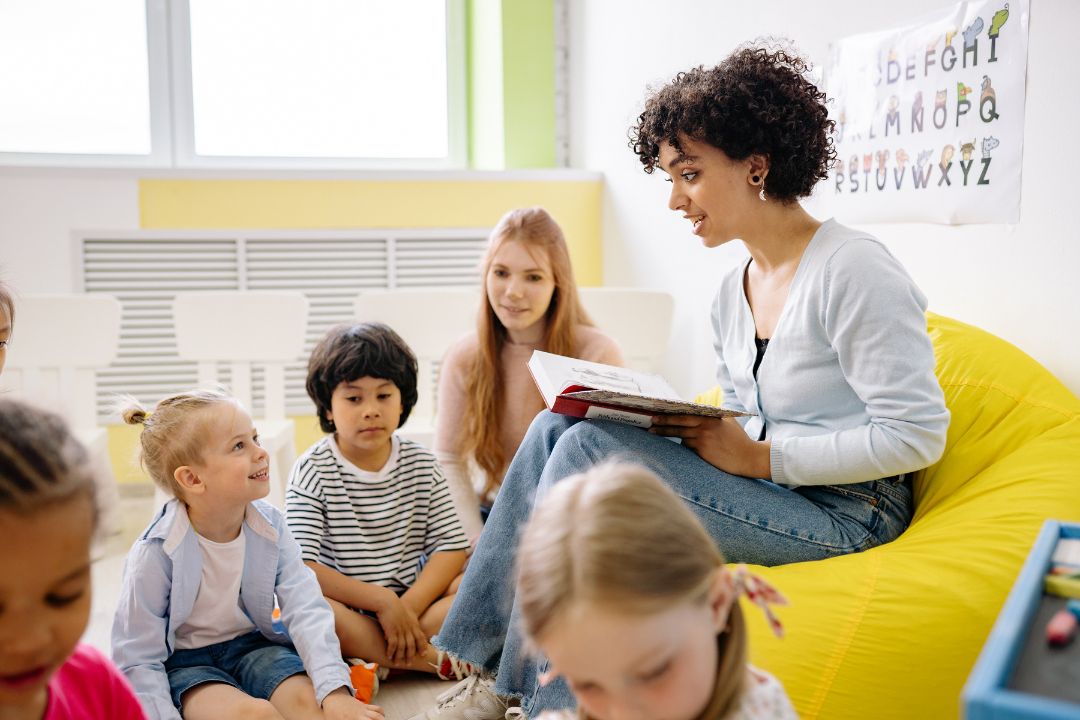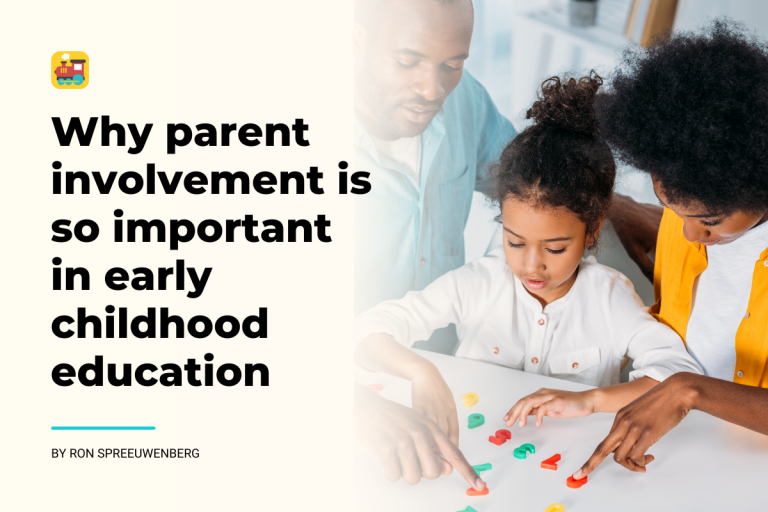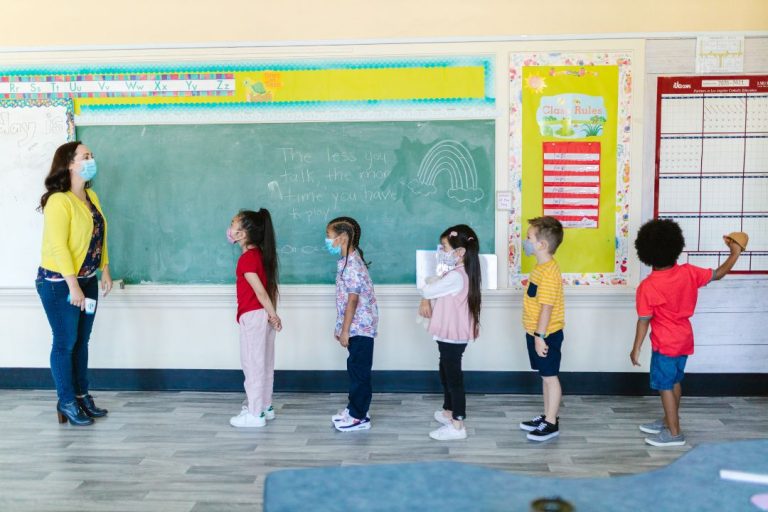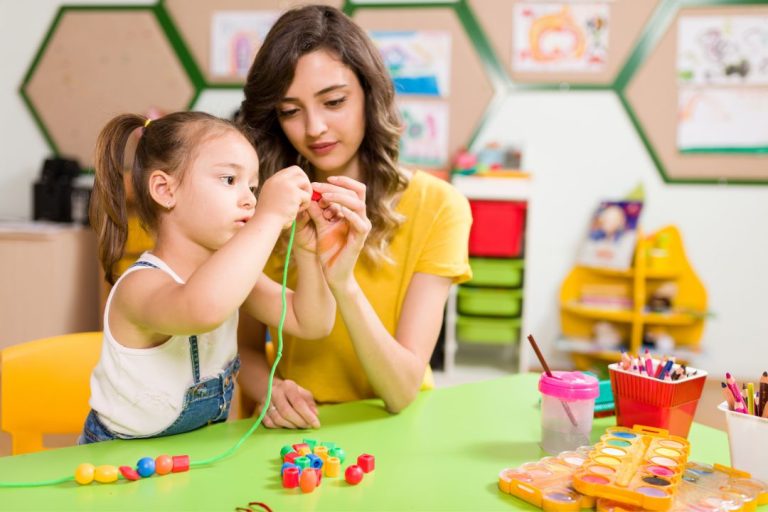How to Teach Thankfulness to Preschoolers: Fun and Creative Strategies

To teach thankfulness to preschoolers, use simple language, show gratitude in actions, and encourage them to express thankfulness daily. Teaching preschoolers about thankfulness is an essential part of their emotional development.
By cultivating an attitude of gratitude at a young age, children learn to appreciate the people and things around them. This can have a positive impact on their overall well-being as they grow older. We’ll explore some practical and effective ways to teach thankfulness to preschoolers.
Whether it’s through storytelling, role-playing, or simple daily activities, various methods can help instill gratitude in young children. By incorporating these strategies into their daily routines, parents and educators can help preschoolers develop a positive outlook on life and build strong interpersonal relationships.
Role Of Gratitude In Early Childhood
Psychological Benefits Of Cultivating Thankfulness
Teaching thankfulness to preschoolers can have significant psychological benefits. When children learn to express gratitude, it fosters a positive mindset and enhances their overall well-being. Gratitude helps in shaping their attitudes towards life, promoting a sense of contentment and reducing negative emotions. By consciously focusing on the positive aspects of their lives, children develop resilience and emotional intelligence, empowering them to navigate challenges with optimism.
Impact Of Thankfulness On Social Skills And Empathy
Cultivating thankfulness in preschoolers also has a profound impact on their social skills and empathy. When children understand and appreciate the kindness of others, it promotes empathy and compassion. Expressing gratitude enables them to recognize the efforts of others, thus nurturing their ability to form strong and meaningful relationships. As they learn to acknowledge the support and love they receive, preschoolers are more likely to develop empathy and considerate behavior toward their peers and caregivers.
Creative Thankfulness Activities
When it comes to teaching thankfulness to preschoolers, incorporating creative activities can be a fun and effective way to instill this important value. Engaging in hands-on experiences helps children enjoyably grasp the concept of gratitude. Here are some creative thankfulness activities that can be incorporated into the preschool curriculum.
Thankfulness Jar Or Gratitude Tree Craft
One engaging activity to teach thankfulness to preschoolers is the creation of a thankfulness jar or a gratitude tree craft. This activity encourages children to think about what they are grateful for and express it in a tangible way. Each child can contribute by writing or drawing something they are thankful for on a small piece of paper and placing it in the jar or hanging it on the gratitude tree. This visual representation serves as a constant reminder of the things they appreciate.
Interactive Storytelling With Thankful Themes
Interactive storytelling with thankful themes can captivate preschoolers and provide them with relatable scenarios. Reading books or telling stories that emphasize gratitude allows children to connect with the concept on a personal level. Incorporating props or acting out parts of the story can make the experience even more immersive and impactful.
Gratitude-themed Songs And Dances For Expression
Another effective way to teach thankfulness to preschoolers is through the use of gratitude-themed songs and dances. Children are naturally drawn to music and movement, making it an ideal medium for expression. Encouraging them to dance and sing along to tunes with thankful lyrics fosters a positive and joyful association with gratitude.
Daily Gratitude Practices
Daily gratitude practices are an essential part of teaching thankfulness to preschoolers. It is crucial to incorporate activities and routines that encourage children to reflect on the positive aspects of their lives and express gratitude. By integrating these practices into their daily routine, preschoolers can develop a deeper understanding of thankfulness and its significance.
Encouraging Regular Thank-you’s
Encouraging regular thank-you’s is a simple yet powerful way to instill gratitude in preschoolers. Teaching them to express appreciation for small gestures and acts of kindness helps them understand the value of gratitude. Emphasize the importance of saying “thank you” when someone does something nice for them, fostering a habit of acknowledging and appreciating the kindness of others.
Sharing Circles: Discussing Daily Gratitudes
Introducing sharing circles where children can discuss their daily gratitudes nurtures a sense of community and acknowledgment. It allows each child to share something they are thankful for, promoting self-expression and communal bonding. This practice helps children recognize the abundance of positive experiences in their lives, fostering a mindset of gratitude from an early age.
Visual Reminders In The Learning Environment
Incorporating visual reminders of gratitude in the learning environment serves as a constant reinforcement of the concept. Displaying gratitude-themed posters, artwork, or a gratitude tree where children can add leaves expressing their thanks creates a tangible representation of thankfulness. These visual cues serve as gentle prompts for preschoolers to reflect on the positive aspects of their lives, reinforcing the value of gratitude in their daily experiences.
Incorporating Thankfulness In-Play
Teaching preschoolers about thankfulness through play is an effective and engaging way to instill this important value in their young minds. With the use of role-playing games, gratitude-themed scavenger hunts and puzzles, and art projects that reflect thankfulness, children can learn and internalize the concept of appreciation in a fun and interactive manner.
Role-playing Games Promoting Sharing And Appreciation
Role-playing games are a fantastic way to encourage preschoolers to understand the importance of sharing and appreciating others. Create scenarios where children can take turns being the “giver” and the “receiver” to help them understand how being thankful for what they receive fosters a positive attitude. This can be incorporated into games such as “restaurant,” “teacher-student,” or “family” scenarios, where children can take on different roles and practice expressing gratitude. Through these activities, they learn the value of sharing and the joy of thanking others.
Gratitude-themed Scavenger Hunts And Puzzles
Engage preschoolers in scavenger hunts and puzzles with a gratitude theme. Create a list of items that represent things to be thankful for, such as a favorite toy, a photo of family, or a beautiful flower. Encourage children to find these items and talk about why they are grateful for them. Additionally, providing gratitude-themed puzzles can help children connect the dots between gratitude and enjoyment, promoting a positive mindset while having fun.
Art Projects That Reflect Thankfulness
Art projects can be a powerful tool for teaching thankfulness to preschoolers, allowing them to express their gratitude in a creative way. Provide materials such as markers, colored paper, and glue to create projects that reflect what they are thankful for, such as making a “thankful tree” where they can write or draw things they are grateful for on the leaves. By engaging in art activities, children can visually represent their feelings of appreciation, reinforcing the concept of thankfulness in a hands-on and expressive manner.
Behavioral Reinforcement Techniques
Behavioral reinforcement techniques play a crucial role in teaching thankfulness to preschoolers. By using positive reinforcement for thankful behavior and addressing the lack of thankfulness with patience, parents and educators can effectively instill gratitude and appreciation in young children.
Positive Reinforcement For Thankful Behavior
Positive reinforcement techniques involve acknowledging and rewarding a child’s grateful or appreciative behavior. This can be done through verbal praise, such as saying “Thank you for sharing your toys,” or with physical rewards like stickers or small treats. By consistently praising and rewarding thankful actions, preschoolers learn to associate positive behavior with positive outcomes, reinforcing their understanding of thankfulness.
Addressing Lack Of Thankfulness With Patience
When a preschooler demonstrates a lack of thankfulness, it’s essential to address the behavior with patience and understanding. Rather than scolding or reprimanding the child, take the time to gently explain the importance of gratitude and model thankful behavior through your own actions. Encouraging empathy and perspective-taking can also help preschoolers develop a deeper understanding of gratitude over time.
When Thankfulness Doesn’t Come Easily
Teaching thankfulness to preschoolers can sometimes be a challenging task, especially when children find it difficult to express gratitude or recognize the things they are thankful for. However, with the right approach and tailored activities, it is possible to nurture a spirit of thankfulness in young children, even when it doesn’t come naturally.
Tailoring Activities To Individual Needs
Each child is unique, and their ability to comprehend and express thankfulness varies. Tailoring activities to the individual needs of each child is essential in fostering a sense of gratitude. Customizing activities based on a child’s interests and capabilities can help ensure they are engaged and receptive to the concept of thankfulness.
For example, a child who is more visually oriented might respond well to coloring activities where they can express what they are thankful for through art, while a child who enjoys storytelling could benefit from interactive storytelling sessions that emphasize gratitude.
Building Emotional Intelligence Alongside Thankfulness
Teaching thankfulness provides an ideal opportunity to develop emotional intelligence in preschoolers. By incorporating activities that promote self-awareness and empathy, it is possible to nurture a more profound understanding of gratitude. Engaging in discussions about feelings and exploring the impact of kind actions on others can help children develop a greater sense of empathy and appreciation for the world around them.
Frequently Asked Questions For How To Teach Thankfulness To Preschoolers
How Can I Teach Thankfulness To My Preschooler?
Teach thankfulness to your preschooler by leading by example, expressing gratitude, and incorporating Thanksgiving activities into your daily routine. Encourage them to say “thank you” and participate in acts of kindness to nurture a thankful mindset from a young age.
What Are Some Simple Activities To Teach Thankfulness?
Engage preschoolers in activities like creating a gratitude journal, making thank-you cards, or volunteering together. These activities help them understand the concept of thankfulness and develop a sense of appreciation for the people and things around them.
Why Is It Important To Teach Thankfulness At A Young Age?
Teaching thankfulness at a young age fosters positive character development, empathy, and emotional well-being in children. It helps them build strong relationships, reduces entitlement, and promotes a sense of contentment and happiness in their lives.
Conclusion
Teaching thankfulness to preschoolers is an important foundation for their social and emotional development. By incorporating simple activities and modeling gratitude, we can help our little ones understand and appreciate the value of being thankful. These early lessons will shape them into kind, empathetic individuals in the future.

Emma combines her teaching experience with her writing skills to produce engaging and informative content. She covers a range of topics, from classroom management to innovative teaching techniques.






